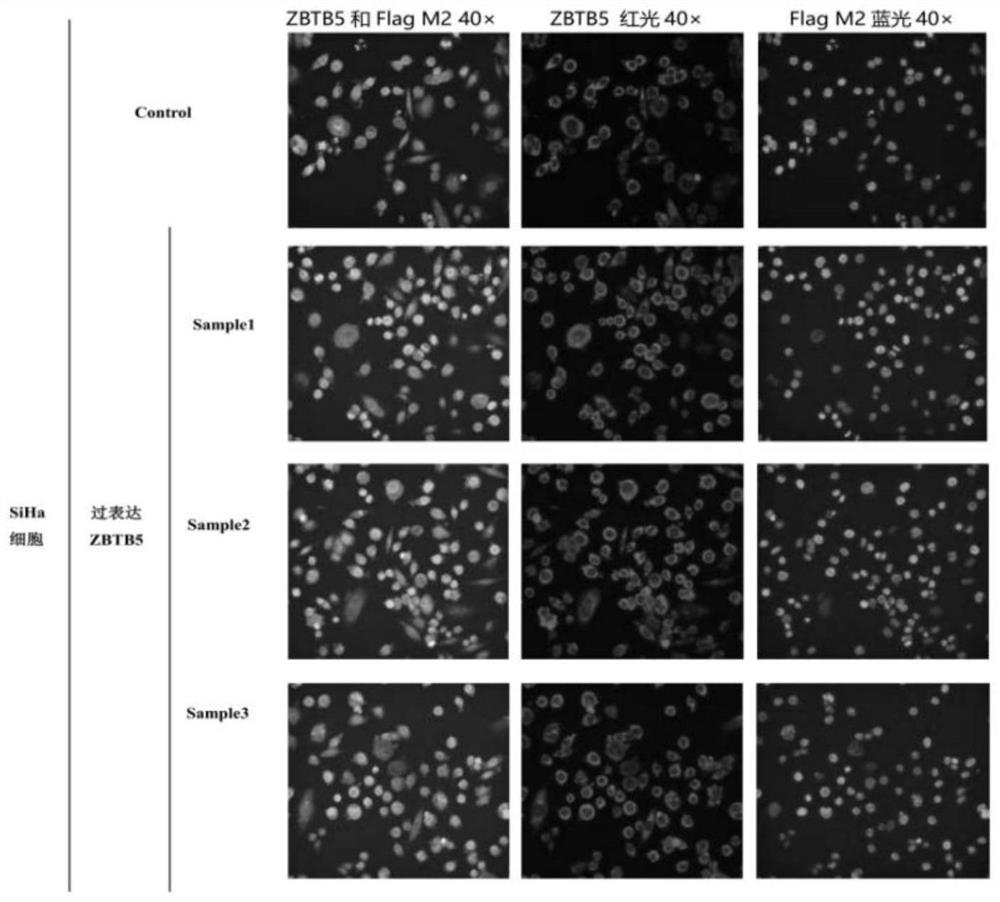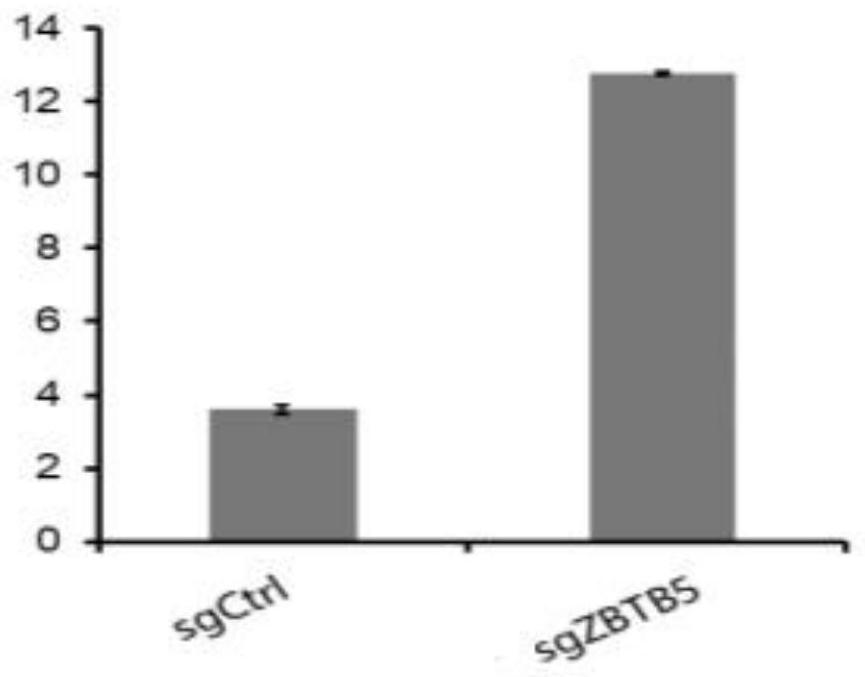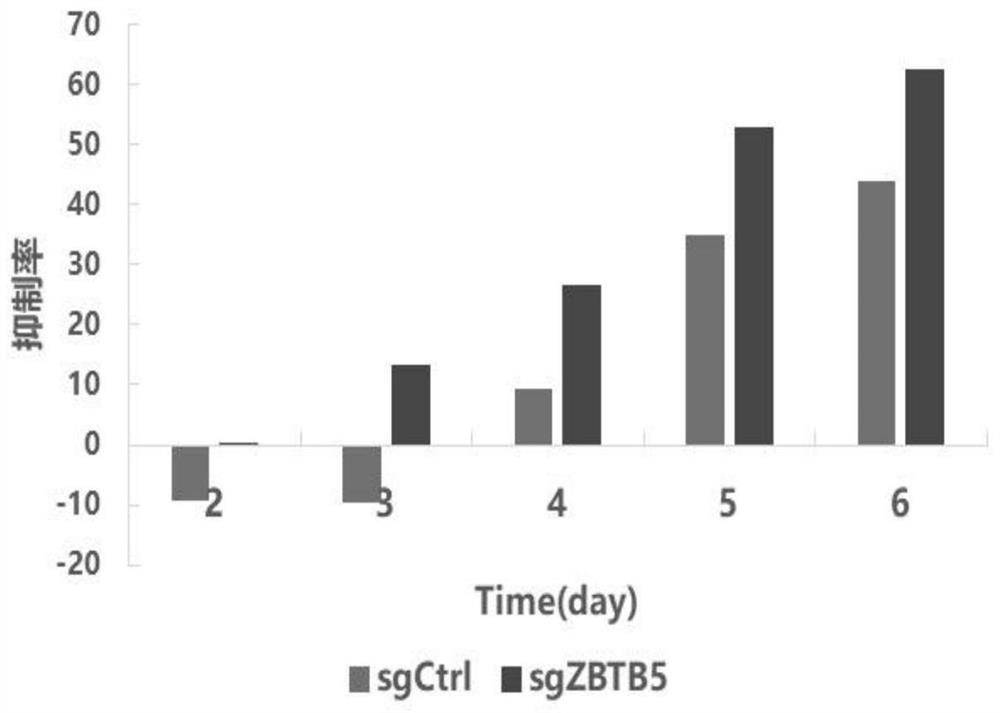Application of ZBTB5 gene to detection and treatment of drug resistance of paclitaxel for cervical cancer
A technology for paclitaxel and cervical cancer, applied in the field of biomedicine, can solve problems such as treatment failure of patients with cervical squamous cell carcinoma, and achieve the effects of improving treatment effect, enhancing cell apoptosis, and inhibiting cell proliferation
- Summary
- Abstract
- Description
- Claims
- Application Information
AI Technical Summary
Problems solved by technology
Method used
Image
Examples
Embodiment
[0035] (1) Screening paclitaxel resistance gene knockout targets in SiHa cells using in vitro cell models
[0036] 1. Screening of paclitaxel resistance genes in cervical cancer SiHa cells
[0037] CRISPR / Cas9 gene editing system was used to infect cervical cancer SiHa cells with lentivirus, and the candidate genes were screened after cultured with paclitaxel chemotherapy drug and DMSO solvent for 7 days and 14 days respectively.
[0038] Screening method:
[0039] High-throughput sequencing was performed on the cells of the paclitaxel chemotherapy drug group and the cells of the DMSO solvent group (the RNA sequence of the ZBTB5 gene transcript is SEQID NO: 2), and the fold change (FC) and Bayesian factor (BF) were selected to meet the following screening conditions genes as candidate genes.
[0040] Filter criteria:
[0041] FC≤-2 in the paclitaxel chemotherapy group, |FC|<2 in the DMSO solvent group;
[0042] And BF>2 in the paclitaxel chemotherapy group, BF<0 in the DMS...
PUM
 Login to View More
Login to View More Abstract
Description
Claims
Application Information
 Login to View More
Login to View More - R&D
- Intellectual Property
- Life Sciences
- Materials
- Tech Scout
- Unparalleled Data Quality
- Higher Quality Content
- 60% Fewer Hallucinations
Browse by: Latest US Patents, China's latest patents, Technical Efficacy Thesaurus, Application Domain, Technology Topic, Popular Technical Reports.
© 2025 PatSnap. All rights reserved.Legal|Privacy policy|Modern Slavery Act Transparency Statement|Sitemap|About US| Contact US: help@patsnap.com



